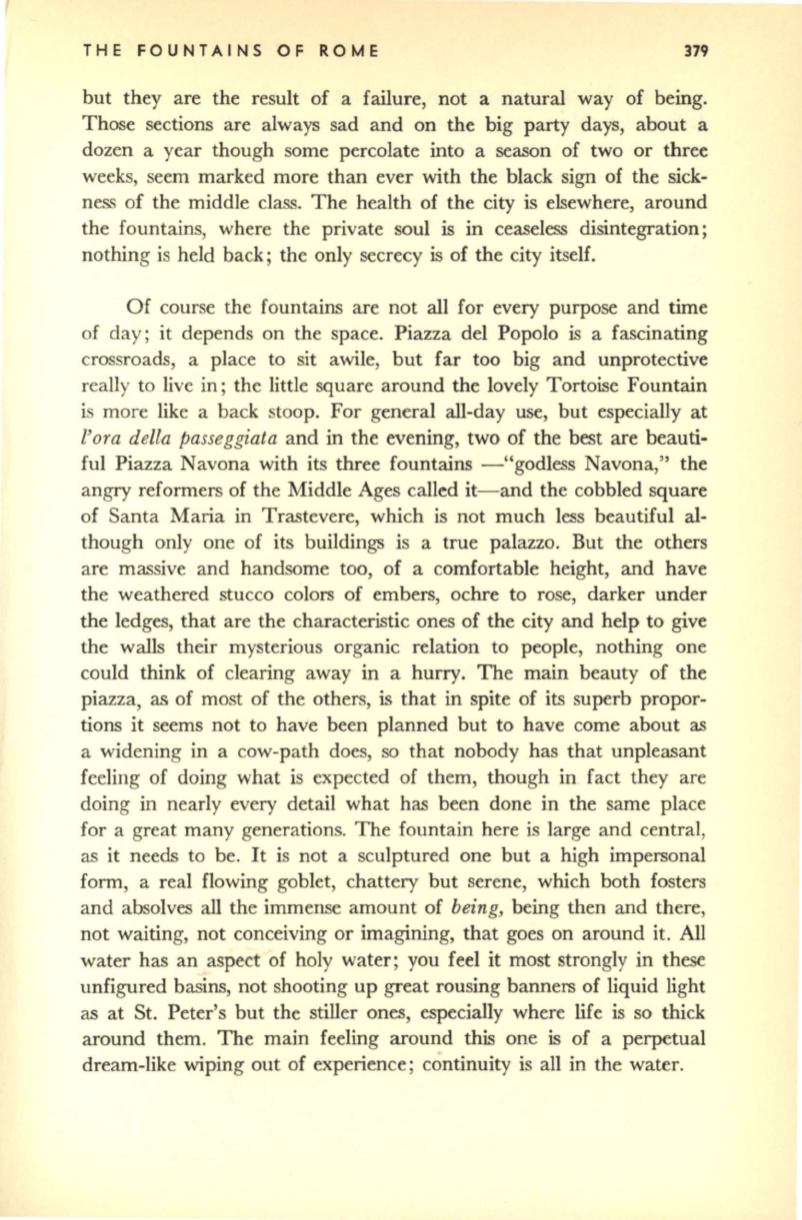
THE FOUNTAINS OF ROME
379
but they are the result of
.a
failure, not a natural way of being.
Those sections are always sad and on the big party days, about a
dozen a year though some percolate into a season of two or three
weeks, seem marked more than ever with the black sign of the sick–
ness of the middle class. The health of the city is elsewhere, around
the fountains, where the private soul is in ceaseless disintegration;
nothing is held back; the only secrecy is of the city itself.
Of course the fountains are not all for every purpose and time
of day; it depends on the space. Piazza del Popolo is a fascinating
crossroads, a place to sit awile, but far too big and unprotective
really to live in; the little square around the lovely Tortoise Fountain
is more like a back stoop. For general all-day use, but especially at
Pora della passeggiata
and in the evening, two of the best are beauti–
ful Piazza Navona with its three fountains -"godless Navona," the
angry reformers of the Middle Ages called it-and the cobbled square
of Santa Maria in Trastevere, which is not much less beautiful al–
though only one of its buildings is a true palazzo. But the others
are massive and handsome too, of a comfortable height, and have
the weathered stucco colors of embers, ochre to rose, darker under
the ledges, that are the characteristic ones of the city and help to give
the walls their mysterious organic relation to people, nothing one
could think of clearing away in a hurry. The main beauty of the
piazza, as of most of the others,
is
that in spite of its superb propor–
tions
it
seems not to have been planned but to have come about as
a widening in a cow-path does, so that nobody has that unpleasant
feeling of doing what is expected of them, though in fact they are
doing in nearly every detail what has been done in the same place
for a great many generations. The fountain here is large and central,
as it needs to be. It is not a sculptured one but a high impersonal
form, a real flowing goblet, chattery but serene, which both fosters
and absolves all the immense amount of
being,
being then and there,
not waiting, not conceiving or imagining, that goes on around it. All
water has an aspect of holy water; you feel it most strongly in these
unfigured basins, not shooting up great rousing banners of liquid light
as at St. Peter's but the stiller ones, especially where life is so thick
around them. The main feeling around this one is of a perpetual
dream-like wiping out of experience; continuity is all in the water.


